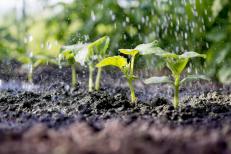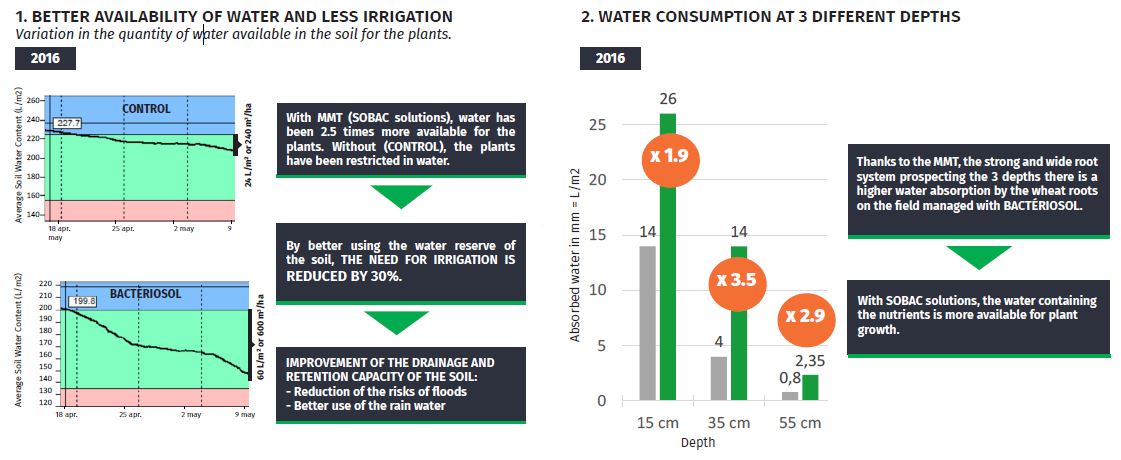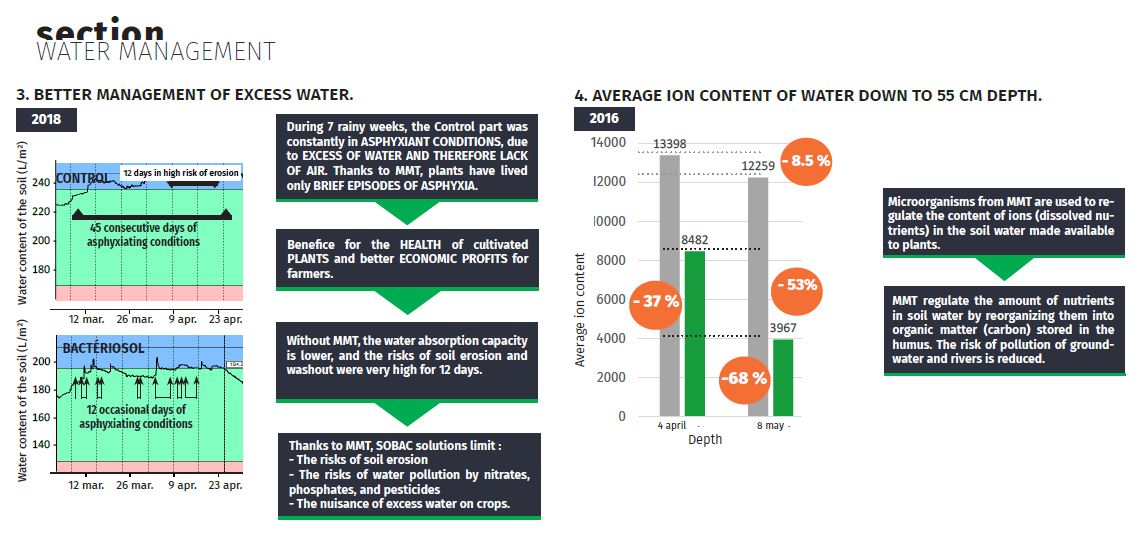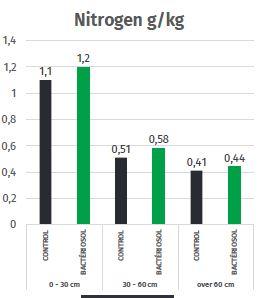
Marcel MÉZY Technologies allow rapid creation of humus, which is the natural reservoir of water and nutrients for plants

Climate change must be at the forefront of the water management debate to establish a public policy that meets high societal and environmental expectations.
Surface run-off is a major factor in the erosion of agricultural soils. Likewise, the transfer of minerals to soil depths is a key process in the pollution of groundwater and the eutrophication of watercourses. Soils lose their ability to retain rainwater, thereby increasing the risk and size of flooding.
By their surface area and their use, agricultural soils concentrate environmental, agronomic and health concerns.
The modification of the soil structure and the gradual disappearance of the microorganisms living there are hypotheses that partially explain the decrease in agricultural yields. SOBAC solutions have been created to meet the needs of jointly managing these concerns. These solutions, available under the BACTÉRIOSOL / BACTÉRIOLIT brands, consist of an ecosystem of microorganisms developed on plant naturally
composted from Marcel MÉZY Technologies (MMT).
They allow rapid creation of humus, which is the natural reservoir of water and nutrients for plants.
This document synthesizes a comparative observational study over 3 years carried out on an agricultural plot divided in two with a CONTROL part and a part seeded with BACTÉRIOSOL. Quantifications of the water content and the quantity of ions (nutrients in solution) in the soils are carried out and are compared with agronomic results.
From 2016 to 2018, on the Auger St Vincent (Northern France) catchment area, two SENTEK capacitive probes, 20 meters apart, measured the conductivity and the water potential of the soil at 3 depths: 15 cm, 35 cm and 55 cm. Monitoring was carried out by Dr. Jean-François Berthoumieu, from the company AGRALIS, which is developing the use of these Australian probes in France. The analysis of the measurements is done blindly to ensure total objectivity of the interpretation.
GRAPHIC READING GUIDE :

RESULTS AND INTERPRETATIONS :




Improving carbon and nitrogen storage in soils thanks to MMT :
Marcel Mézy, a pionner in many fields, identified the action of his complex of microorganisms on carbon storage in the soil. The first results were observed in a laboratory in closed conditions where wheat was grown in washed river sand. The conclusions show a 6-fold increase in organic matter content in 2 months due to the use of BACTÉRIOSOL. Subsequently, a lot of ad hoc evidence and testimonies from the field have made it possible to validate and consolidate these results.
In 2016, the Purpan school of agronomy in Toulouse, France was asked by SOBAC to measure in a completely independent manner the action of Marcel MÉZY Technologies on the storage of carbon and nitrogen in soils. A set of 10 plots using BACTÉRIOSOL for at least 3 years without adding organic matter and a control zone without BACTÉRIOSOL were thus studied. The results of this study are shown in this article.
Each plot has 2 modalities : BACTÉRIOSOL modality, sown with this technology and conducted according to the recommendations of SOBAC company (application between 3 and 6 years depending on the sites), and a CONTROL modality, conducted according to the usual cultural practices of the farmer. On each modality, 3 soil pits were dug in order to observe and describe the soil profile and take soil samples. From each-pit, 3 soil samples were taken: 0-30 cm, 30 60 cm and beyond 60 cm (from 60 cm to the depth reached on the shallowest pit on the site).
2 methods (CONTROL / BACTÉRIOSOL) tested on 10 sites in arable crops, viticulture, and arboriculture (same plot cut in half, same tillage) without adding organic matter. 3 soil trenches per category and per site: 60 trenches in total and 180 samples analysed.
The quantity of the organic matter with BACTÉRIOSOL is higher than the quantity of the CONTROL organic matter. The quantity of the organic matter decreasing with depth (significant effect on the 60 trenches). The results thus show an average carbon gain with BACTÉRIOSOL of + 19.8 t of carbon per hectare which is 14.8 % more than the CONTROL.
BACTÉRIOSOL allowed an average gain of 5 ton of carbon per hectare and per year, i.e. 50 ton of manure per hectare and per year in carbon equivalent on this study.
* Manure base. With 1 ton of Bovine MANURE = approximately 100 kg of carbon at 20% OM and 10% Carbon.

Purpan study results : total nitogen by horizon :
The total nitrogen with BACTÉRIOSOL is higher than total nitrogen of the CONTROL. The results show an average total nitrogen gain with BACTÉRIOSOL of + 1 t per hectare, which is 9.4 % more than the CONTROL. BACTÉRIOSOL allowed an average gain of 250 kg total nitrogen per hectare and per year, i.e. 50 t of cattle manure per hectare and per year in nitrogen equivalent in this study.
1 tonne of MANURE = about 0.5% of total nitrogen (cattle manure).
CONCLUSION :
All sites combined, and whatever the horizon, the organic matter content of the samples with BACTÉRIOSOL is higher than that of the CONTROL :
> + 5 t/ha/year of carbon or + 14.8 %
> + 250 kg/ha/year total nitrogen or + 9.4 %

